Wildebeest Migration In Masai Mara
The Great Migration as it is known is the movement of a million plus wildebeest from Serengeti in Tanzania northwards into the adjoining Masai Mara Reserve in Kenya. It is one of the world’s most spectacular and thrilling display of wildlife behaviour. The migration takes place every year with the animals primal instincts guiding them towards greener pastures following the climatic rain fall patterns over the Serengeti-Maasai Mara eco system. For the 2021 and 2022 seasons we recommend planning your travel for mid July as this is when the migration typically starts proper with the larger herds of wildebeest starting the move into Masai Mara. The migration takes place till end of August, before declining into mid September.
Although numbers vary every year, past migrations have seen upto 1.5 million wildebeest, close to a million Zebra and large numbers of others animals undertake the long trek that lasts many weeks. Their journey is especially frought with danger as they cross the crocodile infested Mara and Talek rivers along the way, during which many cannot escape the giant nile crocodiles lying in wait for their prey.
A Guide To The Wildebeest Migration
Travelers planning a safari to Kenya often have many questions related to the migration and we are listing the most common below for the sake of brevity.
What time of the Year is the Wildebeest Migration ? Though the migration into Masai Mara typically starts in July and ends late September, the exact dates around this period are not predictable until the first large wildebeest herds actually gather at the northern edge of Serengeti as they near the Mara. These initial herds are sometimes known to gather at a spot for days on end without crossing over to the Mara, so when exactly the final leg of the movement starts is difficult to predict.
So what is the best time to visit Masai Mara to see the Migration ? Based on decades of experience, we would choose mid July to late August as the best time to see the migration, keeping in mind it is a gradual event that takes places over several weeks at different locations along the Serengeti Masai Mara border. If we were to narrow it down further to what month is the best to see the migration we would probably pick August.
Where do the wildebeest migrate to and from ? The movement of the wildebeest is from Serengeti into Masai Mara and is dictated by factos such as the climate, pasture and mating and calving seasons. Keep in mind the wildebeest are migrating through the year in a generally clockwise direction covering vast areas reaching into Southern, Central and Western Serengeti before the year long trek brings them to Masai Mara around July to August. Their journey back to Serengeti happens around late October though this is less spectacular and more like a slow dispersal.
How do you see the Wildebeest Migration ? You can see the migration during a safari gamedrive in the Masai Mara Game reserve which is conducted in specialized vehicles driver by experienced Driver-Guides. As there are several core points where the wildebeest cross the rivers, it may be necessary to access and station oneself at these points during a day-long outing in the reserve as some of the lodges and camps can be up to an hour’s drive from the ideal vantage points. Most tourists who come specially to see the migration consider seeing the river crossings a highlight of their tour and therefore want to spend enough time at these crossing points, which by the way tend to vary slightly every year while staying within a generally similar sub locality of the reserve.
Month By Month Wildebeest Migration
Many people think that the Great Migration only happens once in a year, but the migration is in fact an all year round phenomenon event – offering different unique and exciting wildlife experience at various times of the year. The River crossing is one of the most requested event of the migration and usually coincide with the peak safari season, therefore the assumption that this is the only time of the year that the wildebeest are on the move or can be seen. This crossing usually occurs at Mara River around late July to August with parts of September and again on their return south, around the last two weeks of October through early November. Hence, the best times to track and see the annual wildebeest migration in Masai Mara. Below is a general breakdown of more or less where the herds are during the year, bearing in mind it’s difficult to predict the herds movement as it’s prompted by rain, which can be early, late or ‘on time’.
December To April
Depending on the rains, the herds can be seen south of Serengeti National Park between Ndutu plains and Ngorongoro plains. Hence, the best place to be during these four months is the far south of Serengeti. Around February, it is the calving season and there are high chances of witnessing a wildebeest birth. The herds move swiftly, in search of favorable grasslands to provide sustenance for the arrival of their young. The predator interaction is also most likely, as the lions and leopards are moving to this region to prey on the young and vulnerable calves. End of March/early April the herds move slowly and predictably to begin their northward journey, and many have left already and are in the central and even western Serengeti.
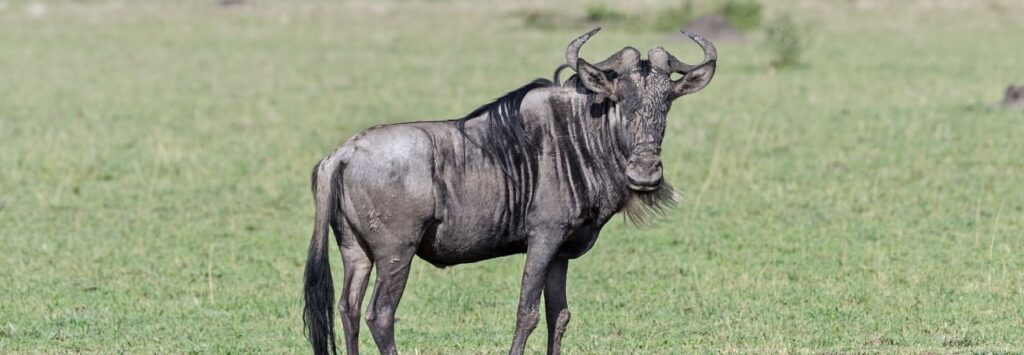
May To June
During this time of the year the migratory herds all seem to be moving north, in search of fresh grazing and water. The migration is usually in huge columns of up to 40 kilometres / 25 miles in length can be sometimes be seen as the wildebeest funnel up into the central and western Serengeti, often containing hundreds of thousands of animals – joined by many zebra, and a scattering of Thomson’s and Grant’s gazelles. June marks the end of rainy season, traditionally this is the Grumeti River crossing period, but this is mainly dependent on water level of the Grumeti River ( here you may spot Nile Crocodiles). This crossing is not quite as spectacular as the crossings of the Mara River.
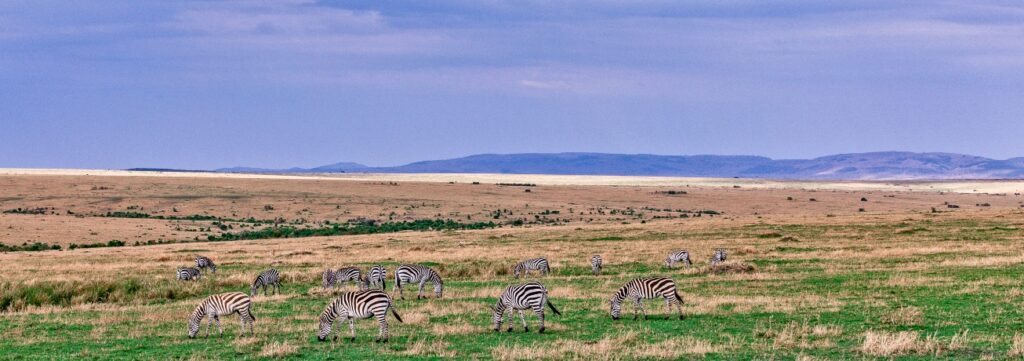
July To September
This is when the big event occurs, the start of major Mara River crossing. The herds have reached the western Serengeti and Grumeti Reserves and are peering closely at the brown waters of the rivers they have to cross. In August, the survivors herd continues moving northwards, into the northern Serengeti and begin crossing into Kenya’s Masai Mara National Reserve. The herd breaks into smaller groups- almost half of the animals remains in the northern Serengeti, the rest of the wildebeest will have crossed the Mara River, and the majority of the herds will be in the Greater Masai Mara area, eating the lush green grass resources before venturing north towards the private conservancies (Mara North, Olare Orok).This is usually the most preferred moments of the migration, watching the frantic herds of the wildebeests crossing the Mara River.
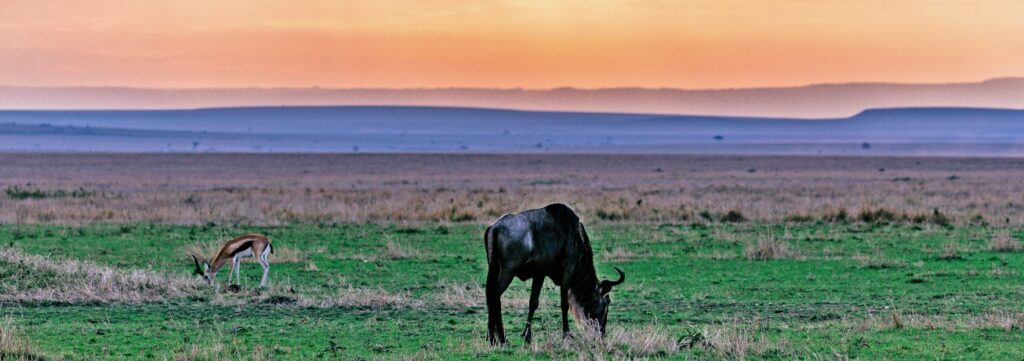
October To November
The wildebeest herds are migrating again with more accord: all are heading south, through western Loliondo and the Serengeti National Park’s Lobo area, returning to the green shoots. The herds can now be seen in Kogatende and Lamai (Northern Serengeti). In a ‘normal year’ the short rains have begun in November. The herds are now in the Serengeti, stationed in the Lobo, Mbuze Mawe and Seronera Valley areas where water is abundant. Fresh grazing sees the wildebeest clustered in the north-eastern Serengeti (around Lobo in particular) as well as the southern Serengeti. Calving begins again, the predators move in again, and the cycle of life begins all over again.
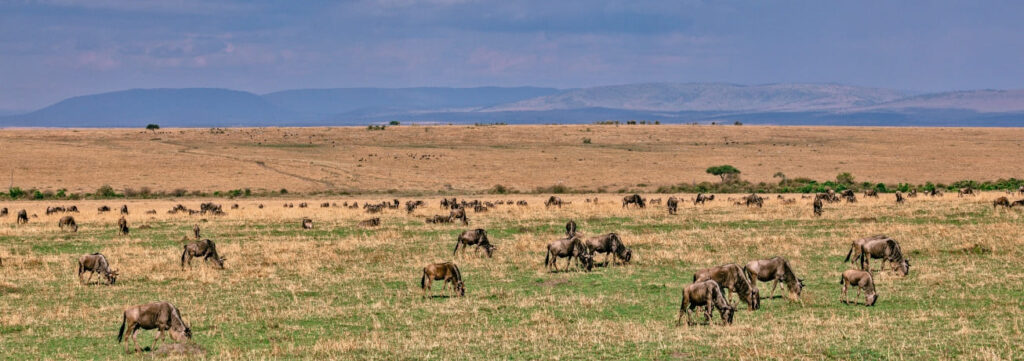

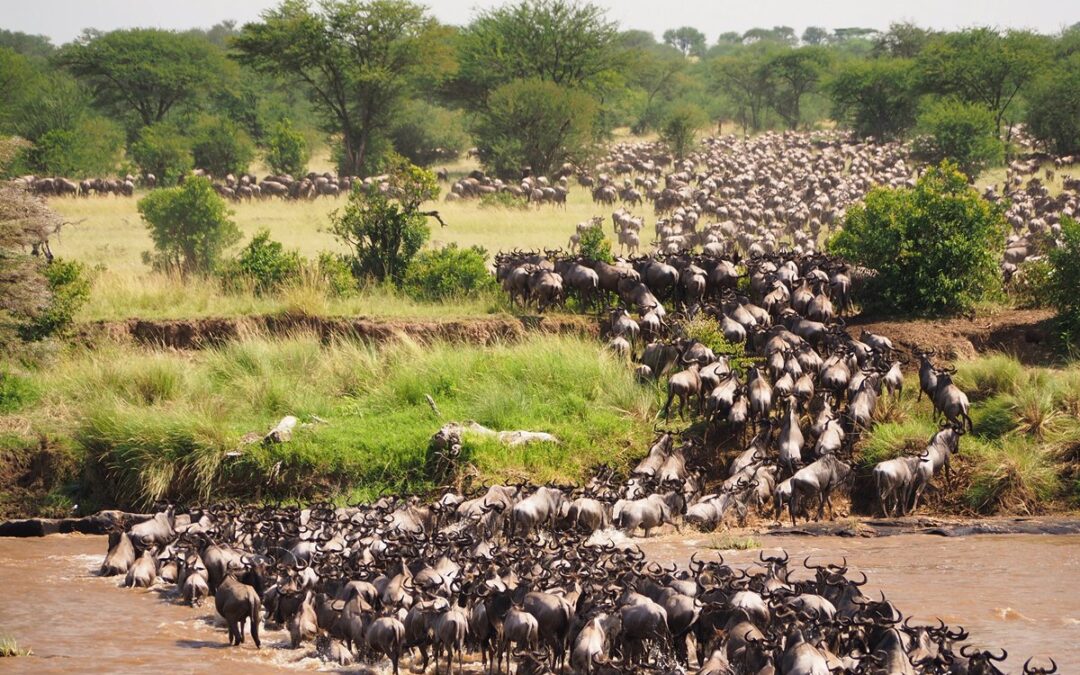
I enjoyed the humor in your piece! For further reading, check out: FIND OUT MORE. Let’s discuss!
Your point of view caught my eye and was very interesting. Thanks. I have a question for you.
Superb layout and design, but most of all, concise and helpful information. Great job, site admin. Take a look at my website UQ6 for some cool facts about Cosmetic Treatment.
You absolutely know how to keep your readers interest with your witty thoughts on that topic. I was looking for additional resources, and I am glad I came across your site. Feel free to check my website QU6 about Search Engine Optimization.
Thank you for your sharing. I am worried that I lack creative ideas. It is your article that makes me full of hope. Thank you. But, I have a question, can you help me?
I don’t think the title of your article matches the content lol. Just kidding, mainly because I had some doubts after reading the article.
I don’t think the title of your article matches the content lol. Just kidding, mainly because I had some doubts after reading the article. https://www.binance.com/da-DK/register?ref=V2H9AFPY
I don’t think the title of your article matches the content lol. Just kidding, mainly because I had some doubts after reading the article.
Can you be more specific about the content of your article? After reading it, I still have some doubts. Hope you can help me. https://accounts.binance.com/en-ZA/register?ref=JHQQKNKN
Your article helped me a lot, is there any more related content? Thanks!
Your article helped me a lot, is there any more related content? Thanks!
Your point of view caught my eye and was very interesting. Thanks. I have a question for you.
Your article helped me a lot, is there any more related content? Thanks! https://accounts.binance.com/sl/register?ref=OMM3XK51
I don’t think the title of your article matches the content lol. Just kidding, mainly because I had some doubts after reading the article.
Your article helped me a lot, is there any more related content? Thanks!
Thanks for sharing. I read many of your blog posts, cool, your blog is very good.
Thank you for your sharing. I am worried that I lack creative ideas. It is your article that makes me full of hope. Thank you. But, I have a question, can you help me?
Can you be more specific about the content of your article? After reading it, I still have some doubts. Hope you can help me.
Your article helped me a lot, is there any more related content? Thanks!
Thanks for sharing. I read many of your blog posts, cool, your blog is very good. https://accounts.binance.com/da-DK/register-person?ref=V2H9AFPY
best rated canadian pharmacy
https://expresscanadapharm.shop/# Express Canada Pharm
canadian pharmacy no scripts
Thanks for sharing. I read many of your blog posts, cool, your blog is very good.
They are always proactive about refills and reminders.
cost of generic cytotec pills
The widest range of international brands under one roof.
Their loyalty points system offers great savings.
buy lisinopril without rx
They provide international health solutions at my doorstep.
They offer international health solutions without borders.
can you buy cheap clomid without prescription
drug information and news for professionals and consumers.
A modern pharmacy with a traditional touch of care.
how can i get cheap cipro price
п»їExceptional service every time!
I don’t think the title of your article matches the content lol. Just kidding, mainly because I had some doubts after reading the article. https://www.binance.com/bn/register?ref=UM6SMJM3
Your point of view caught my eye and was very interesting. Thanks. I have a question for you.
Can you be more specific about the content of your article? After reading it, I still have some doubts. Hope you can help me.
Thank you for your sharing. I am worried that I lack creative ideas. It is your article that makes me full of hope. Thank you. But, I have a question, can you help me?
https://pinupaz.top/# pin up
Can you be more specific about the content of your article? After reading it, I still have some doubts. Hope you can help me.
secure checkout ED drugs: best price Cialis tablets – buy generic Cialis online
modafinil pharmacy: modafinil pharmacy – modafinil 2025
legit Viagra online: safe online pharmacy – trusted Viagra suppliers
discreet shipping: no doctor visit required – order Viagra discreetly
online Cialis pharmacy generic tadalafil or order Cialis online no prescription
https://images.google.com.my/url?sa=t&url=http://zipgenericmd.com Cialis without prescription
discreet shipping ED pills affordable ED medication and generic tadalafil affordable ED medication
buy modafinil online: modafinil pharmacy – doctor-reviewed advice
order Viagra discreetly: fast Viagra delivery – same-day Viagra shipping
secure checkout ED drugs discreet shipping ED pills or generic tadalafil
https://hokejbenatky.cz/media_show.asp?type=1&id=205&url_back=https://zipgenericmd.com secure checkout ED drugs
order Cialis online no prescription buy generic Cialis online and affordable ED medication generic tadalafil
verified Modafinil vendors: doctor-reviewed advice – doctor-reviewed advice
discreet shipping ED pills: affordable ED medication – discreet shipping ED pills
https://zipgenericmd.shop/# cheap Cialis online
order Cialis online no prescription best price Cialis tablets or secure checkout ED drugs
https://maps.google.co.ck/url?q=https://zipgenericmd.com generic tadalafil
Cialis without prescription FDA approved generic Cialis and affordable ED medication FDA approved generic Cialis
cheap Cialis online: secure checkout ED drugs – discreet shipping ED pills
best price for Viagra: order Viagra discreetly – cheap Viagra online
http://zipgenericmd.com/# cheap Cialis online
Modafinil for sale: purchase Modafinil without prescription – modafinil legality
buy generic Cialis online affordable ED medication or affordable ED medication
https://cse.google.cat/url?q=https://zipgenericmd.com cheap Cialis online
buy generic Cialis online buy generic Cialis online and reliable online pharmacy Cialis FDA approved generic Cialis
secure checkout ED drugs: secure checkout ED drugs – buy generic Cialis online
http://maxviagramd.com/# order Viagra discreetly
order Cialis online no prescription Cialis without prescription or online Cialis pharmacy
https://ace.puyofever.com/board/test/link.cgi/zipgenericmd.com affordable ED medication
affordable ED medication cheap Cialis online and buy generic Cialis online order Cialis online no prescription
modafinil 2025: buy modafinil online – modafinil legality
trusted Viagra suppliers: order Viagra discreetly – discreet shipping
http://zipgenericmd.com/# online Cialis pharmacy
Modafinil for sale: legal Modafinil purchase – doctor-reviewed advice
buy generic Cialis online best price Cialis tablets or affordable ED medication
https://todosobrelaesquizofrenia.com/Redirect/?url=https://zipgenericmd.com/ FDA approved generic Cialis
buy generic Cialis online secure checkout ED drugs and reliable online pharmacy Cialis online Cialis pharmacy
Your article helped me a lot, is there any more related content? Thanks!
https://maxviagramd.shop/# generic sildenafil 100mg
secure checkout ED drugs: cheap Cialis online – FDA approved generic Cialis
can you get generic clomid for sale: Clom Health – generic clomid no prescription
generic prednisone pills: PredniHealth – 80 mg prednisone daily
PredniHealth: PredniHealth – PredniHealth
where to buy prednisone in australia buy prednisone 20mg without a prescription best price or 10mg prednisone daily
https://toolbarqueries.google.co.th/url?sa=i&url=https://prednihealth.com prednisone over the counter uk
prednisone 5084 prednisone 300mg and prednisone pills cost price of prednisone 5mg
cialis generic release date: cialis after prostate surgery – us cialis online pharmacy
pastillas cialis: Tadal Access – cialis or levitra
buy cialis/canada: Tadal Access – where to buy cialis
cialis for sale toronto: Tadal Access – cialis sublingual
peptide tadalafil reddit: TadalAccess – super cialis
boner pills online: best online ed medication – ed medicines
ed pills cheap Ero Pharm Fast buying ed pills online
Online medication store Australia: pharmacy online australia – Licensed online pharmacy AU
buy antibiotics: Biot Pharm – buy antibiotics over the counter
https://pharmau24.shop/# Online medication store Australia
online ed prescription Ero Pharm Fast Ero Pharm Fast
get antibiotics without seeing a doctor: BiotPharm – cheapest antibiotics
Medications online Australia: Online drugstore Australia – Pharm Au24
buy antibiotics for uti: buy antibiotics online – buy antibiotics
pharmacy online australia: Pharm Au24 – Buy medicine online Australia
https://biotpharm.com/# buy antibiotics over the counter
Ero Pharm Fast Ero Pharm Fast Ero Pharm Fast
get antibiotics quickly over the counter antibiotics or buy antibiotics from india
http://images.google.ci/url?q=https://biotpharm.com buy antibiotics from canada
get antibiotics without seeing a doctor buy antibiotics and buy antibiotics online get antibiotics without seeing a doctor
buy antibiotics from canada: buy antibiotics over the counter – Over the counter antibiotics for infection
Ero Pharm Fast: erection pills online – best ed pills online
http://pharmau24.com/# PharmAu24
buy antibiotics from canada: buy antibiotics for uti – antibiotic without presription
cheapest antibiotics: BiotPharm – cheapest antibiotics
https://eropharmfast.com/# Ero Pharm Fast
Ero Pharm Fast Ero Pharm Fast ed meds by mail
Discount pharmacy Australia: Medications online Australia – pharmacy online australia
buy antibiotics buy antibiotics online or buy antibiotics over the counter
https://www.play.net/bounce/redirect.asp?URL=http://biotpharm.com buy antibiotics
buy antibiotics from india buy antibiotics online and Over the counter antibiotics for infection buy antibiotics for uti
Other male-specific side effects of steroids include the development of breast tissue (gynecomastia) because of elevated estrogen ranges. Roid rage, or changes in anger and aggression management, can also impact male steroid users. Not all males will expertise elevated aggressiveness, and research has proven that solely a tiny p.c of them discover this facet impact. The lack of PCT requirement for females is one benefit ladies have over males in relation to steroid use. The Feminine Cutting Stack is designed to imitate the three most potent chopping and fat-burning PEDs, and it’s safe to make use of for longer than harsh steroids. Mixed with a stable exercise plan and fat-loss food regimen, The Feminine Slicing Stack is a body-transforming powerhouse that may have folks turning heads.
Equipoise is on the market, for example, in 10ml, 50ml, 100ml, 250ml, and even 500ml vials. It is commonly concentrated at 200mg/ml, though some underground laboratories have manufactured 250mg/ml Equipoise products, and even larger concentrations exist. EQ cycles are usually run as mass gaining cycles that at all times contain the use of at least Testosterone in some type (usually the lengthy esters of Testosterone, to find a way to match-up with EQ’s half-life).
EQ is mostly dosed at 200 mg/ml and generally you see UGL’s (underground labs) producing 300mg/ml versions of it. Counterfeit or faux EQ is everywhere, and the pricing you’re looking at isn’t going to provide you any clues in regards to the legitimacy of the Equipoise being offered (which is why I can’t say enough times to do your research on suppliers). Several high-profile professional athletes have examined positive for Boldenone over the years, with drastic penalties for his or her careers. Nolvadex for 4-6 weeks at 20mg/day, decreased to 10mg/day for the ultimate week. “Cardio gains are amazing; I can run and run and run endlessly.” – This remark stood out. Even guys who aren’t typically that into cardio will find that EQ turns you into an endurance monster.
However, there might be still a threat hooked up to any steroid, which is why we can not advocate it. Even though Equipoise is a well-tolerated steroid, its use does not come with none danger. In summary, whereas EQ 300 is usually a useful addition to a bodybuilder’s arsenal, it is important to weigh the pros and cons fastidiously and method its use responsibly. B) RMSF plots of the 250 ns simulated trajectories of AR, ERα and ERβ in complicated with Ecdysterone. C) Rg plots of the 250 ns simulated trajectories of AR, ERα and ERβ in complicated with Ecdysterone. In structural biology, RMSD is an essential parameter for evaluating the soundness of simulated bio-molecular methods, the place generally, decrease values signify larger stability and higher values indicate much less secure complexes. Made for the elite athlete and the strong-willed our products had been designed to gasoline your athletic efficiency.
After a beginner take a look at blast (400mg/week) and a cruise at 175mg/week, I’m planning to branch out to an EQ-based blast pretty quickly. One solely needs to remember and know that this drug has established itself fairly properly among skilled athletes. This can be seen by reading an enormous variety of constructive critiques about Boldenone, which actually works very properly both individually when taken daily and in various mixtures with different highly effective anabolics. Aromatase inhibitors and antiestrogens will assist prevent estrogenic unwanted effects. This anabolic reveals good outcomes when girls in bodybuilding purposefully go to weight achieve.
Boldenone is the active substance and Undecylenate is the hooked up ester to have the ability to decelerate the release in the system after administration. Different esterified versions of Boldenone can be found, but they are extremely unpopular and I wouldn’t recommend them due to the high danger of receiving bunk compounds. Thanks to Undecylenate ester, Equipoise half-life is very lengthy of days. Equally, individuals who have been taking Equipoise for extended intervals can anticipate the advantages to final for as a lot as eight weeks.
The cause why Deca is more prone to cause side effects is that it’s a stronger androgen. This means it binds to the androgen receptor more successfully, which can lead to increased aggression and irritability. That mentioned, it could also trigger some severe unwanted facet effects, such as liver harm, high blood pressure, and aggression. The second effect is a rise in strength indicators, which is accompanied by a rise in physique weight. The objective of those threads is to assemble all kinds of consumer experiences and suggestions.
If you’ve any questions, you’ll have the ability to all the time contact our customer support staff for assist. The Undecylenate ester has been developed to offer a peak focus of the energetic ingredient in the physique for days. Step into the realm of unparalleled anabolic superiority with Canadian Made Labs’ elite vary of injectables.
This steroid, like different synthetic testosterone derivatives, can have several opposed effects. It Is crucial to take precautions in the course of the cycle, however some unwanted facet effects should still occur. A unique advantage of Boldenone is its ability to considerably stimulate appetite. This increase in hunger is helpful for these trying to bulk up, because it makes it simpler to consume the required calories for muscle development and recovery. The ERβ – estradiol (Fig 4A) complicated exhibited a network of hydrogen bonds, including a hydrogen bond difference between prohormones and steroids – https://clubgti.com/wp-content/pages/?best_bulking_steroid_cycle_1.html, the hydroxyl group of estradiol and the amine group of Arg346 at a distance of two.66 Å. Additionally, the oxygen atom of Glu305 formed a bond with the hydroxyl group of estradiol at a bond length of 1.81 Å.
But there’s much more to HGH than that… HGH is a fancy hormone; once you understand its major features and results, you’ll find a way to see what makes it interesting to bodybuilders and athletes. A good place to begin is 500 mg per week for 8-12 weeks, and it will give off a very noticeable muscle mass enhance. It has produced constructive results, primarily based on the individuals who’ve tried it, and is very straightforward to manage. 500 mg per week is the most common place to begin and lasts eight to 12 weeks. Nolvadex can additionally be used for PCT with a dosage of forty mg daily for two weeks and 20mg for the third week.
This is just enough to see some positive effects with out going overboard. Alternatively, you could experiment with lower doses (125 mg.) at intervals within the weeks previous to deciding if you want the next long-term test dose. After eight weeks, it’s time to begin post-cycle remedy by taking 50 milligrams of Clomid for 3 full months. When taken accurately, Take A Look At Enanthate will assist you to construct muscle faster than ever earlier than and even maintain that new muscle mass once your cycle is over.
Give our merchandise a try to start your first steroid cycle with total peace of thoughts. Put simply, PCT works to stop steroid unwanted side effects and maintain those features you’ve earned during the cycle itself. A Testosterone Enanthate solely cycle lasts for a whopping 15 weeks, taking 500mg weekly until you reach week 10.
Therefore, you are rather more restricted in the time you should be using it to attenuate these risks. Taking it to the next level at 30mg every day will start more severe water retention, however the muscle and energy features will begin coming on thick and quick. Sure, other sides may also enhance at this level, however the majority of men can tolerate 30mg of Dbol well. Women can use most SARMs, and most females will need to use the compounds that enhance endurance and fats loss rather than muscle achieve. Girls generally use Ligandrol and Andarine to assist with muscle toning and cutting fat, and this can be achieved at low doses as small as 5mg every day. There are other androgenic-type unwanted side effects that some SARMs could cause, aside from hair loss. But they may primarily only have an effect on you if you’re prone already, and a large quantity of SARM users don’t expertise noticeable androgenic effects at all.
This cycle is usually only utilized by men due to testosterone causing virilization unwanted effects in ladies. We usually observe virilization unwanted effects progressively occurring and exacerbating over a sustained period of time. A woman ought to discontinue her cycle if she begins to experience any unwanted symptoms. Primarily Based on our observations, girls usually have interaction in Anavar-only cycles, whereas males with prior steroid use are more inclined to mix Anavar with different substances. Whether Or Not you’re bulking, cutting or seeking to stack, we’ve got every thing you need. Take a break between weeks eleven and 12 earlier than heading into PCT for the remaining 13 to 15. Winstrol could additionally be a steroid for novices, however it isn’t one to be taken lightly.
As lengthy as you’re monitoring your pink blood cell count (and presumably donating blood regularly), you will discover the longer cycles manageable with this steroid. Anavar, or oxandrolone, is among the mostly used anabolic steroids, with each men and women cycling it. Some bodybuilders utilize Anavar all year spherical, similar to testosterone replacement remedy (TRT).
Bear In Mind to follow the PCT program for individuals who plan on tying any of the above stacks, and no major drawback will come up. Dianabol is extensively obtainable, low cost, and generally easy to search out in top quality. There’s hardly a steroid provider on the market who doesn’t inventory Dianabol as a outcome of this is a constant best-seller that’s all the time in demand. This is the primary query new users will often ask because looking for out the highest high quality and purest form of Dbol for best outcomes and security causes is sensible.
Nonetheless, an on an everyday basis intake of 20mg of Nolvadex can lessen the unwanted effects while on this cycle. It’s pretty fundamental in what it does – however we’re bodybuilders, and gaining mass and strength is our priority. If you might be genetically predisposed How To Get Bigger Without Steroids (https://promotionhealthcare.com/pages/buy_testosterone_11.html) baldness, then you might be much extra likely to expertise this specific facet effect. The major technique of administering Dianabol is thru a simple tablet.
Your point of view caught my eye and was very interesting. Thanks. I have a question for you.
70918248
References:
steroid to lose weight fast (http://forum.sigma-ood.com/index.php/topic,17255.0.html?PHPSESSID=9hvj9k4m0h0p61bs9mtueve4a4)
70918248
References:
difference between anabolic And androgenic, https://www.zenraintrading.com/product/27-144hz-180hz-curved-gaming-monitor-full-hd-1080p/,
Can you be more specific about the content of your article? After reading it, I still have some doubts. Hope you can help me.
I don’t think the title of your article matches the content lol. Just kidding, mainly because I had some doubts after reading the article.
Can you be more specific about the content of your article? After reading it, I still have some doubts. Hope you can help me.
Your point of view caught my eye and was very interesting. Thanks. I have a question for you.
Your article helped me a lot, is there any more related content? Thanks!
I don’t think the title of your article matches the content lol. Just kidding, mainly because I had some doubts after reading the article.
Your article helped me a lot, is there any more related content? Thanks!
Your article helped me a lot, is there any more related content? Thanks!
Thanks for sharing. I read many of your blog posts, cool, your blog is very good.
Can you be more specific about the content of your article? After reading it, I still have some doubts. Hope you can help me.
Thanks for sharing. I read many of your blog posts, cool, your blog is very good.
Can you be more specific about the content of your article? After reading it, I still have some doubts. Hope you can help me.
Can you be more specific about the content of your article? After reading it, I still have some doubts. Hope you can help me. gate推荐代码
Your article helped me a lot, is there any more related content? Thanks!
Your point of view caught my eye and was very interesting. Thanks. I have a question for you. https://accounts.binance.com/bg/register?ref=53551167
Your point of view caught my eye and was very interesting. Thanks. I have a question for you. https://www.binance.com/en-IN/register?ref=UM6SMJM3
Thanks for sharing. I read many of your blog posts, cool, your blog is very good. https://accounts.binance.com/id/register-person?ref=FIHEGIZ8
Tipping Point Australian host Todd Woodbridge, former tennis champion, brings perspective at https://australiangameshows.top/ to modern game show philosophy.
Экспертные мнения и разборы — рекомендуем для интересующихся качеством жизни. https://gratiavitae.ru/
можно ли купить подписку perplexity pro через мтс на ios https://uniqueartworks.ru/perplexity-kupit.html
Metabolic Freedom helps you understand your body’s signals and reset your metabolism the right way. https://metabolicfreedom.top/ metabolic freedom meal plan